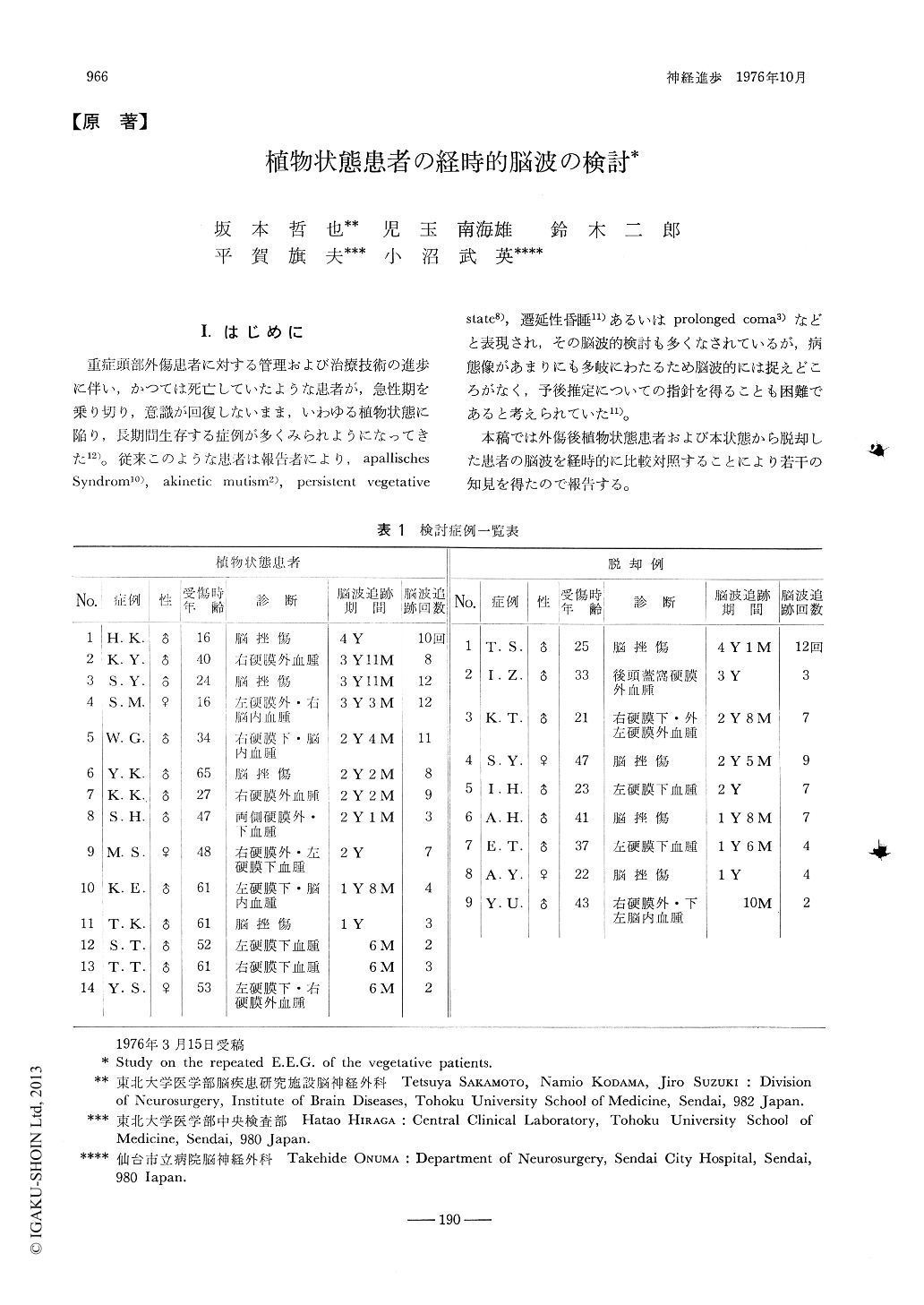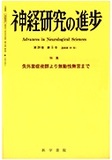Japanese
English
- 有料閲覧
- Abstract 文献概要
- 1ページ目 Look Inside
I.はじめに
重症頭部外傷患者に対する管理および治療技術の進歩に伴い,かつては死亡していたような患者が,急性期を乗り切り,意識が回復しないまま,いわゆる植物状態に陥り,長期間生存する症例が多くみられようになってきた12)。従来このような患者は報告者により,apallisches Syndrom10),akinetic mutism2),persistent vegetative state8),遷延性昏睡11)あるいはprolonged coma3)などと表現され,その脳波的検討も多くなされているが,病態像があまりにも多岐にわたるため脳波的には捉えどころがなく,予後推定についての指針を得ることも困難であると考えられていた11)。
本稿では外傷後植物状態患者および本状態から脱却した患者の脳波を経時的に比較対照することにより若干の知見を得たので報告する。
There have been two controversial opinions about electroencephalogram (E.E.G.) of the vege-tative patients. One group insists that E.E.G. of the vegetative patients looks like normal patterns with α basic rhythm. The other group insists that it shows completely abnormal patterns with slow basic rhythm. E.E.G has been hitherto considered to have a poor value on prognostic judgement.

Copyright © 1976, Igaku-Shoin Ltd. All rights reserved.


